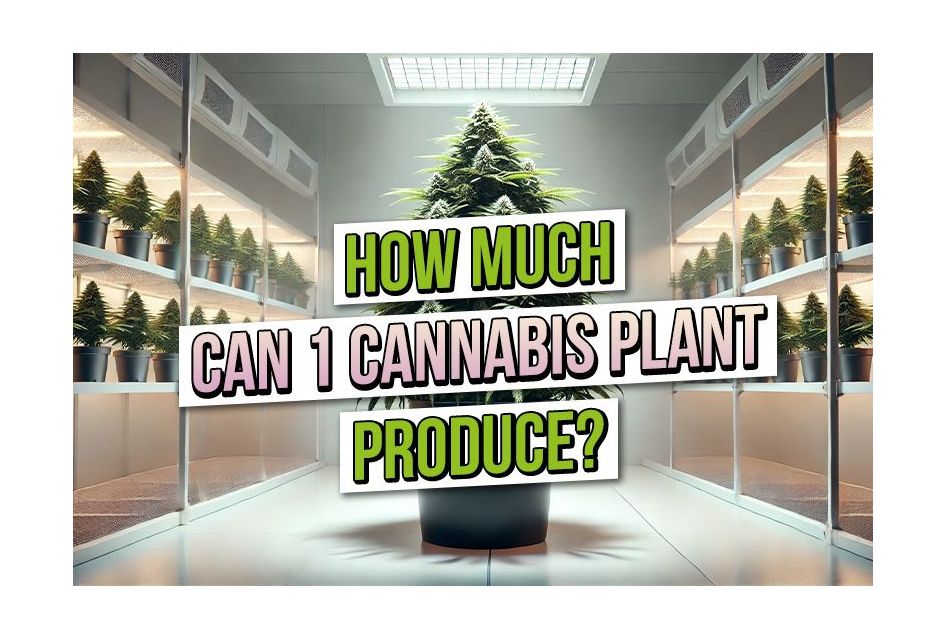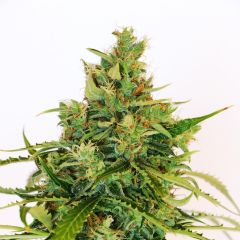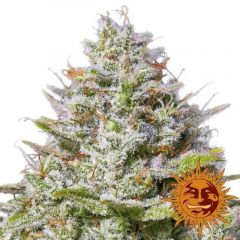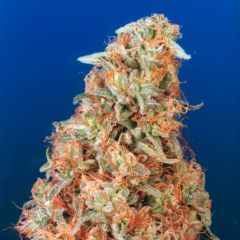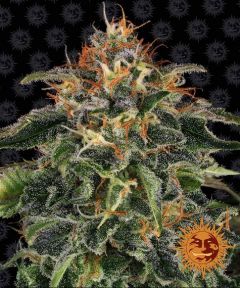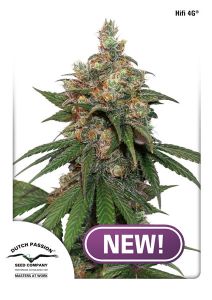How Much Does One Cannabis Plant Produce?
AKA: How much stash can you squeeze from your green goddess?
Let's be honest: this question always pops up, whether you're growing your first or fiftieth plant. Loud and proud. It's the cannabis grower's version. Are we there yet? Instead of a kid in the backseat, it's you staring at a leafy bush wondering, How many grams will this beauty bless me with?
But before you go measuring jars in your dreams, the honest answer is a bit more complicated, and no, we're not going to give you a vague "it depends" and leave you hanging. From strain genetics to growing conditions and how much TLC you're willing to dish out, quite a few factors decide whether you'll end up with a modest stash… or a personal dispensary.
So grab a rolling paper, sit back, and let's break down what affects your final yield without the fluff, the false promises, or the fertiliser salesman talk.
What Affects How Much Flower You Get?
Alright, it's time for some real talk. The yield you pull from a single cannabis plant isn't just about luck or magic soil. It comes down to a combo of the following factors. Mess with one, and your plant will let you know.
1. Genetics Matter More Than You Think
You wouldn't adopt a chihuahua and expect it to guard your house like a Rottweiler. The same goes for cannabis strains. Some are naturally low-yielders with faster flower times (hello, autoflowers), while others are heavy-hitting photoperiods bred to be bushy, bulky, and loaded with buds.
Look for strain descriptions that mention "high yield," "XL harvests," or "commercial production" if you're chasing weight. But don't ignore your growing environment; just because a strain can pump out 700g doesn't mean it will if you're growing in a cupboard with a desk lamp.
ASC recommendation: Amnesia - Super Strains
Some strains are just born to yield. This legendary sativa has been around longer than some growers and still dominates for a reason. Expect tall, lanky plants with serious bud output. If you’ve got the space (and patience), she’ll reward you.
Genetics designed for XL harvests and endurance
Old-school Amnesia lineage with modern stability
Needs training to control height, but worth it
Yield tip: Stretchy as hell, so top early and use LST. Let it go wild outdoors if you can.
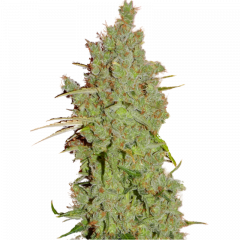 Amnesia - 5PACKNo está disponible
Amnesia - 5PACKNo está disponible
2. Indoor vs. Outdoor
Let's settle this: outdoor plants can produce monster yields. If the conditions are perfect, we're talking about a kilo or more per plant. But indoors? You've got more control. Lighting, airflow, temperature, feeding — it's a tailored experience. Expect anything from 50g to 600g per plant, depending on skill level and setup.
Rule of thumb: indoors = consistency and stealth, outdoors = big space, significant risk, big rewards.
ASC recommendation: Amnesia K Lemon - Kannabia
Zesty, citrus-drenched, and built for performance. This one was made for outdoor glory, thriving in the sun while pumping out dense, resin-rich buds with unmistakable lemon-fuel vibes.
Naturally vigorous and resistant to pests & humidity
Perfect for sun-drenched balconies or guerrilla grows
High yields, minimal stress
Yield tip: Keep it fed, give it space, and this lemony beast will thank you in sticky grams.
3. Lighting: Don't Skimp
Think of lights like your plant's personal sun. Your yield will be ghosted if it's too dim, far away, or on the wrong spectrum. Invest in quality grow lights (LEDs are the modern go-to), and make sure your plants get 18+ hours of light during veg and a solid 12/12 for flowering.
A well-lit plant is a happy, productive plant. A poorly lit one is just slowly sulking in the corner, wondering why it even bothered to sprout.
ASC recommendation: Blue Gelato 41 (Barney’s Farm)
A fruity powerhouse that demands decent lighting to hit its full chunky, blue-tinged potential. It thrives under strong LEDs or sun-soaked gardens and brings that dessert strain density you can smell from across the room.
Loves intense indoor lighting setups
Blueberry x Thin Mint Girl Scout Cookies = flavour + bulk
High THC, high trichomes, high satisfaction
Yield tip: Don’t skimp on light. This isn’t a desk-lamp strain. Proper LEDs = thick cola city.
4. Pot Size: Roots First, Buds Later
Have you ever tried dancing in jeans that were three sizes too small? Exactly. Plants need room to grow, and it all starts below the surface. If your roots are cramped, your plant will stunt like it's on a protest strike.
Generally:
- Autoflowers do well in 10–15L pots.
- Photoperiods need more legroom — 20L or bigger for best results.
Fabric pots are a grower's best mate here. They let roots breathe, drain well, and stop things from turning into a soggy root prison. Big pot = big rootball = bigger plant. It's maths but stoner-friendly.
ASC recommendation: Power Plant (Dutch Passion)
Still one of the most consistent yielders in the photoperiod world. Give it room in a 20L+ pot and let it show you what South African genetics can do when they’re not cramped up like a festival tent.
Why it fits:
Responds to space with outrageous upward and lateral growth
Fast flowering with a serious root system
Yield tip: Bigger pot = bigger bud. Simple maths. Use fabric pots for bonus airflow points.
5. Nutrients: Don't Starve (or Drown) Your Plant
Feeding cannabis is a bit like seasoning food — too little, and it's bland; too much, and you've ruined dinner. Beginners often overdo it, throwing every bottle of liquid feed at their plant like a chemical cocktail party.
Here's the cheat code:
- Vegetative stage = high nitrogen.
- Flowering stage = lower nitrogen, more phosphorus and potassium.
Stick to a feeding schedule. Watch for signs (yellowing, burnt tips, sluggish growth), and remember: less is often more. You can always add more feed, but can't take it back once your leaves start crisping like autumn.
ASC recommendation: Moby Dick (Dinafem/Barneys)
Big appetite, big rewards. Moby Dick is the kind of strain that doesn’t mess about. High-yielding, high-THC, and nutrient-hungry in all the best ways. Feed her well (without going overboard), and she’ll repay you in whale-sized buds.
Responds incredibly well to well-balanced feeding schedules
High-energy genetics (White Widow x Haze) = serious nute uptake
Pushes huge growth in veg, and bulks up hard in flower
Yield tip:
Dial in your feeding based on her stage. She loves a structured plan and will show signs early if something’s off — but once locked in, she’s a beast.
6. Training Techniques: Bending for Bigger Buds
Want to grow one plant but harvest like you've got five? Learn to train.
Low-stress training (LST), topping, ScrOG (Screen of Green), and supercropping are all ways to get more light to more bud sites. Instead of one Christmas tree-shaped plant with a big cola and a bunch of little popcorn fluff, you get an even canopy full of dense, juicy flowers.
It's like cannabis yoga. A few bends here and there, and boom, you're stacking grams.
ASC recommendation: HiFi 4G (Dutch Passion)
This one hits all the right notes. Flavour, potency, and yield. But it really shines when you train it right. Think of it as cannabis yoga: top it, bend it, ScrOG it or whatever your technique, it’ll bulk up in response.
Hybrid genetics that respond to every bend and twist
Dense colas with excellent light distribution when trained
XL yields when dialled in
Yield tip: Early LST + good canopy = no popcorn buds, just full-bodied fatness
So… How Much Weed Does One Plant Produce?
Here's the truth: it depends. (We know a classic non-answer, but stay with us.)
If you're growing an autoflower indoors with basic gear and no training, expect 30–100g per plant. Not bad for a first go, and it'll keep the grinder busy for a while.
If you're growing a photoperiod strain outdoors, in rich soil, with some training and TLC? You could easily pull in 300–600g, even 1kg, if the stars align and you're secretly a wizard.
But, and it's a big BUT, it's never just about the genetics, the lights, or the nutrients on their own. It's the combo that counts, like tuning an instrument. Once each piece is in sync, you can get a tune from your plants.
Whether it's your first plant or your fiftieth, it's not just about chasing grams. It's about learning what makes your plant tick, putting in the time, and getting better each time. Because the more you grow, the more you know.
And if you're still wondering what to grow, we've got the cannabis seeds online for days.


